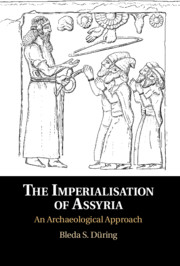Book contents
- The Imperialisation of Assyria
- The Imperialisation of Assyria
- Copyright page
- Dedication
- Contents
- Figures
- Tables
- Acknowledgements
- A Note on Chronology
- Introduction
- One A Fragmented World
- Two A City at the Fringe?
- Three The Rise of Assyria
- Four A Patchwork Empire
- Five Practising Empire
- Six Rulers of All the World
- Conclusions
- Bibliography
- Index
Six - Rulers of All the World
Published online by Cambridge University Press: 24 January 2020
- The Imperialisation of Assyria
- The Imperialisation of Assyria
- Copyright page
- Dedication
- Contents
- Figures
- Tables
- Acknowledgements
- A Note on Chronology
- Introduction
- One A Fragmented World
- Two A City at the Fringe?
- Three The Rise of Assyria
- Four A Patchwork Empire
- Five Practising Empire
- Six Rulers of All the World
- Conclusions
- Bibliography
- Index
Summary
The Neo-Assyrian Empire, arguably the first world empire in world history, is often presented by scholars as a fundamentally new phenomenon that is only superficially connected with earlier Assyrian history. In this brief chapter, I will argue, by contrast, that the foundations of Neo-Assyrian success derive from imperial repertoires developed for a large part during the Middle Assyrian period. This continuity can be seen in a range of imperial practices in conquered territories and in a culture of empire that has its roots in the Late Bronze Age. Additional imperial repertoires were, however, first developed in the Neo-Assyrian period (1000–612 BCE), and contributed to the unprecedented success of the empire.
- Type
- Chapter
- Information
- The Imperialisation of AssyriaAn Archaeological Approach, pp. 133 - 150Publisher: Cambridge University PressPrint publication year: 2020

